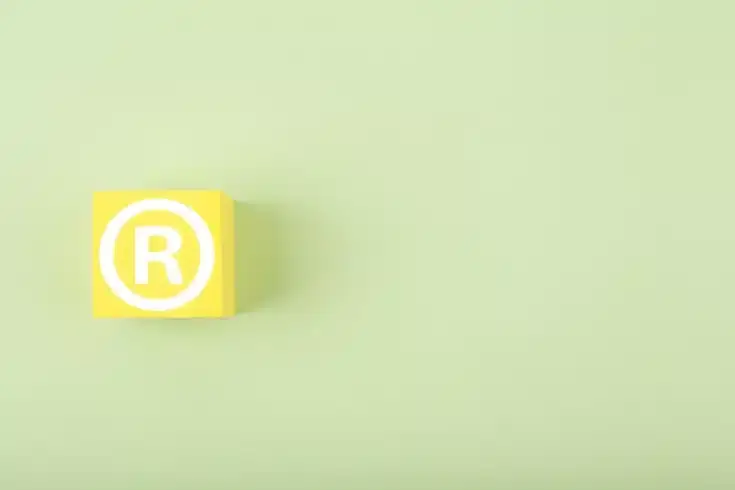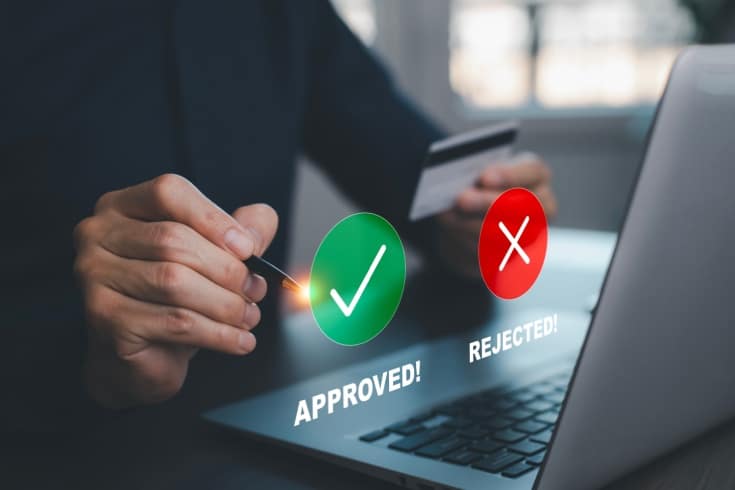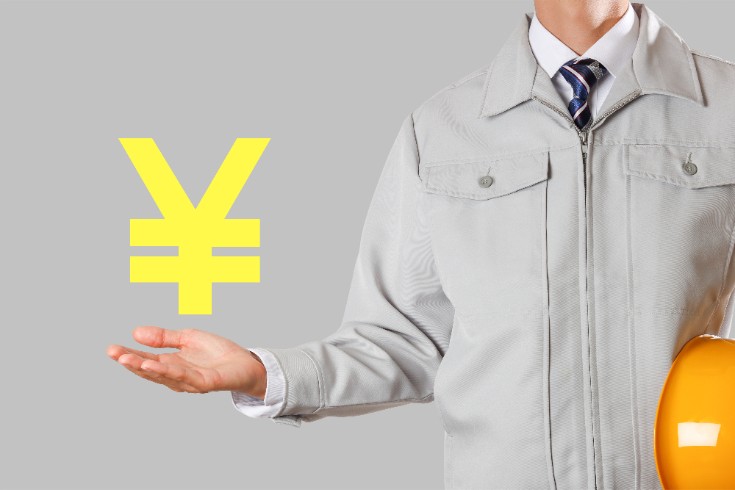Key Points of the Trademark Law and Design Law Amendments Enacted in April of Reiwa 6 (2024): Essential Changes You Need to Know

In Reiwa 5 (2023), certain parts of the Japanese Trademark Law and the Japanese Design Law were amended, with the new provisions coming into effect in April of Reiwa 6 (2024). Due to these amendments, there is a possibility that strategies for trademark and design management may change, so it is crucial to understand the purpose of the revisions and the details of the changes.
This article will explain the content of the amended provisions and the points that should be kept in mind in practice. We will introduce the main points of the amendments to the Trademark Law and the Design Law, so please use this as a reference.
Overview of the Changes to the Japanese Trademark Law and Design Law Enacted in April of Reiwa 6 (2024)
The amendments to the Japanese Trademark Law and Design Law in Reiwa 5 (2023) primarily aim to update the legal framework in response to recent digitalization and internationalization.
The main changes to the Japanese Trademark Law are as follows:
- Introduction of the Consent System
- Relaxation of the registration requirements for trademarks that include another person’s name
In addition, a significant amendment to the Japanese Design Law includes the relaxation of the requirements for the exception to the loss of novelty.
These amendments were promulgated on June 14, Reiwa 5 (2023), and came into effect on April 1, Reiwa 6 (2024). However, the provisions related to changes in the Design Law have been in effect since January 1, Reiwa 6 (2024).
Amendment 1: Introduction of the Consent System (Japanese Trademark Law)

The consent system is a mechanism that allows the registration of a similar trademark application if the owner of a previously registered trademark consents. The introduction of the consent system in trademark law, which had been under consideration for some time, has been implemented with this amendment. Let’s delve into the details of why such an amendment was made.
Previous Regulatory Content
Under the Japanese Trademark Law, it is stipulated that trademarks cannot be registered in the following cases:
(Trademarks that cannot be registered)
Article 4: Notwithstanding the provisions of the preceding article, trademarks listed below cannot be registered:11. A trademark that is identical or similar to another person’s trademark for which an application for registration has been filed before the date of the trademark registration application in question, and is to be used for designated goods or services (referred to as goods or services designated under the provisions of Article 6, Paragraph 1 (including cases where it is applied mutatis mutandis under Article 68, Paragraph 1). The same shall apply hereinafter.) or goods or services similar thereto.
Japanese Trademark Law | e-Gov Law Search[ja]
In a nutshell, trademark rights are the exclusive rights to use a sign (trademark) for goods or services. In business, to ensure that customers choose your products or services over others, it is essential to have a distinguishing ‘sign’. This ‘sign’ is the ‘trademark’, and the exclusive right to use this sign is known as the trademark right.
Article 4, Paragraph 1, Item 11 of the Japanese Trademark Law is a provision that rejects the registration of trademarks that conflict with previously registered trademarks, which could be considered a natural provision.
The purpose of this provision is said to be:
- Protection of the rights of the prior registrant of the trademark
- Prevention of confusion regarding the origin of goods and services
These are the stated objectives.
Background of the Amendment
The amendment was prompted by the following issues with the previous provisions:
- The significant cost of dealing with trademark registration rejections
- Detriments in global contracts
Under the former system, there was a significant burden associated with addressing the rejection of trademark applications due to the existence of identical or similar prior registered trademarks.
If an application trademark is rejected and cannot be amended to avoid conflict, it becomes necessary to take actions such as submitting arguments against the rejection or initiating legal proceedings to cancel the rights of the prior registered trademark. To aim for registration acceptance again, both the time and financial costs can become a substantial burden.
Furthermore, in Western countries, a system has long been in place that allows for the coexistence registration of trademarks, even if a trademark application conflicts with someone else’s prior registered trademark, provided that the owner of the prior trademark consents.
Since the consent system was not recognized under Japanese law, it was not possible to enter into coexistence agreements where two trademarks exist, leading to issues in global contracts.
Therefore, taking into account the needs of businesses and the perspective of international system harmonization, the consent system has now been introduced in Japan.
Amendment Details
Based on the background mentioned above, the following provisions have been newly established.
Japanese Trademark Law Article 4
Trademark Law | e-Gov Law Search[ja]
4 Even if a trademark falls under Article 4, Paragraph 1, Item 11, if the applicant for trademark registration has obtained the consent of the person referred to in the same item, and there is no risk of confusion between the goods or services used by the trademark and the goods or services related to the business of the trademark right holder, exclusive licensee, or ordinary licensee of the other person’s registered trademark referred to in the same item, the provisions of the same item shall not apply.
From this provision, it is clear that trademarks that fall under Article 4, Paragraph 1, Item 11 of the Japanese Trademark Law can now be registered if they meet the following two requirements:
- Consent has been obtained from the rights holder of the prior registered trademark.
- There is no risk of confusion with the prior registered trademark.
In addition, to ensure the purpose of Article 4, Paragraph 1, Item 11, various systems have been put in place as follows:
- The trademark right holder of one of the coexisting trademarks can demand that the other trademark right holder attach a confusion prevention indication (Japanese Trademark Law Article 24, Paragraph 4, Item 1).
- If one trademark right holder uses a trademark with the intent of unfair competition causing confusion of origin, anyone can request a trial for the cancellation of the trademark registration (Japanese Trademark Law Article 52, Paragraph 2).
While the introduction of the consent system is recognized, it is important to note that the protection of the rights of the prior registered trademark and the prevention of confusion of origin are still considered crucial.
The Relationship with the Amendments to the Unfair Competition Prevention Act
With the amendments to the Trademark Law, the Unfair Competition Prevention Act has also been partially revised.
The issue arises when one of the two trademarks, which now coexist due to the introduction of the consent system, acquires the well-known status or fame as defined in Article 2, Paragraph 1, Items 1 and 2 of the Unfair Competition Prevention Act.
A trademark owner who has acquired such recognition can make a claim for an injunction against the other trademark owner based on the Unfair Competition Prevention Act. However, if such an injunction is granted, it could hinder the smooth use of the consent system.
Therefore, it has been stipulated in Article 19, Paragraph 1, Item 3 of the Unfair Competition Prevention Act that trademark owners coexisting under the consent system cannot make a claim for an injunction against each other based on Article 2, Paragraph 1, Items 1 and 2 of the Act.
For other amendments to the Unfair Competition Prevention Act, please refer to the related article below.
Related article: What are the Key Points of the Amended Unfair Competition Prevention Act Enforced in April 2024? An Explanation of the Changes You Need to Know
Revision Point 2: Easing of Registration Requirements for Trademarks Containing the Names of Others (Japanese Trademark Law)
In the 2023 (Reiwa 5) revision, the registration requirements for trademarks that include the names of others have been relaxed.
We will explain the background and the revised provisions.
Previous Provisions
Under the previous Japanese Trademark Law, Article 4, Paragraph 1, Item 8 prohibited the registration of trademarks that included the names of others.
(Trademarks that cannot be registered)
Article 4: Notwithstanding the provisions of the preceding article, trademarks described below cannot be registered.8. Trademarks that include the portrait of another person or the name or title of another person or a well-known pseudonym, stage name, or pen name, or a well-known abbreviation thereof (except when consent from the person is obtained).
Japanese Trademark Law | e-Gov Law Search[ja]
The purpose of this provision is to protect the personal interests of individuals. In other words, it aims to prevent the use of a person’s name or title in a trademark without their consent.
Background of the Revision
While there is a need to protect personal interests, there has been an issue where trademarks could not be registered if they wanted to use the names of founders, designers, etc., as brand names.
Although trademark registration is possible with the consent of the person, it is not practical to obtain consent from every individual with the same name. If trademark rights are not recognized in such cases, it can be said that there is a lack of protection for brands consisting of personal names.
In response to these issues, Western countries have addressed trademarks containing the names of others by setting a requirement for recognition. For the sake of international system harmonization, a revision of Article 4, Paragraph 1, Item 8 of the Japanese Trademark Law was called for, which is also part of the background for this amendment.
Content of the Revision
Article 4, Paragraph 1, Item 8 of the Japanese Trademark Law has been revised in 2023 (Reiwa 5) as follows:
Japanese Trademark Law Article 4, Paragraph 1
Japanese Trademark Law | e-Gov Law Search[ja]
8. Trademarks that include the portrait of another person or the name of another person (limited to names widely recognized among consumers in the field of goods or services where the trademark is used) or a title or a well-known pseudonym, stage name, or pen name, or a well-known abbreviation thereof (except when consent from the person is obtained), or trademarks that include the name of another person and do not meet the criteria set by government ordinance.
With this revision, even if the name belongs to another person, it can be registered as long as it is not widely recognized among consumers in the field of goods or services where the trademark is used.
Furthermore, it has also been stipulated that trademarks containing the names of others that do not meet the criteria set by government ordinance cannot be registered. It will be necessary to pay close attention to the content of the ordinances to be established in the future.
In addition, the Trademark System Subcommittee has stated that even if the name of another person does not have a certain level of recognition, abusive applications that infringe on the personal interests of others will be rejected.
By designing a system that includes government ordinances to protect personal interests, it can be said that the original intent of this provision is being upheld.
Amendment 3: Relaxation of Requirements for Exceptions to Loss of Novelty in Designs (Japanese Design Law)

“Design rights” are one of the intellectual property rights that can be utilized to combat counterfeit and similar products. For a design right to be granted, it must be novel. If a design is published in a periodical or on a website before the design registration application is filed, the design may be deemed to have lost its novelty, which can prevent the design from being registered. However, if certain conditions are met, the design is considered not to have lost its novelty. The recent amendment has relaxed the requirements for these exceptions to the loss of novelty.
Let’s take a closer look at the background and the details of the amendment.
Previous Provisions
Even if the novelty of a design is lost due to the actions of the person who has the right to obtain a design registration, the novelty is not considered lost if the following provisions are met.
(Exception to the Loss of Novelty of a Design)
Article 4
2. Designs that have become subject to Article 3, Paragraph 1, Item 1 or 2 due to the actions of the person who has the right to obtain a design registration (excluding those that have become subject to the same items due to being published in a gazette related to inventions, utility models, designs, or trademarks) shall be treated the same as the preceding paragraph, provided that the application for design registration by the person is made within one year from the date the design became subject to those items.3. A person who wishes to apply the provisions of the preceding paragraph must submit a written statement to that effect to the Commissioner of the Japan Patent Office at the time of the design registration application, and must also submit within thirty days from the date of the design registration application a written proof (hereinafter referred to as “certificate” in this article and Article 60-7) that the design that has become subject to Article 3, Paragraph 1, Item 1 or 2 is eligible for the application of the provisions of the preceding paragraph.
Japanese Design Law | e-Gov Law Search[ja]
This provision anticipates cases where a design is disclosed through exhibitions, publications, websites, etc., and then a design registration application is filed.
The purpose is not to restrict actions that can be understood as being within the same scope of activity as the expression of the design creator.
Background of the Amendment
Prior to the amendment, there were concerns about the substantial burden placed on applicants in submitting the ‘Exception Certificate’ as stipulated in Article 4, Paragraph 3 of the Japanese Design Act.
In recent years, the use of social media and e-commerce sites for PR and sales has led to a diversification and complication of the ways in which designs are made public. Furthermore, it has become increasingly common to publicly disclose designs during the development process, such as revealing designs through crowdfunding before moving on to production.
In such circumstances, creating a certificate that covers all public disclosures within 30 days can be a significant burden for applicants.
Therefore, in the 2023 (Reiwa 5) amendment, the requirements of Article 4, Paragraph 3 have been relaxed.
Amendment Details
The Japanese Design Law, Article 4, Paragraph 3, has been amended as follows in the 2023 (Reiwa 5) revision:
Design Law Article 4
Design Law | e-Gov Law Search[ja]
3. A person who wishes to apply the provisions of the preceding paragraph must submit a document stating such to the Commissioner of the Japan Patent Office at the time of filing the design registration application, and must also submit, within thirty days from the date of the design registration application, a document proving that the design which has become subject to Article 3, Paragraph 1, Item 1 or 2, is eligible for the application of the provisions of the preceding paragraph (hereinafter referred to as “certificate” in this Article and Article 60-7). However, if there are two or more acts by a person who has the right to obtain a design registration for the same or similar design that led to the design becoming subject to Article 3, Paragraph 1, Item 1 or 2, it is sufficient to submit the certificate for only one act, which is the earliest of the said two or more acts.
Prior to the amendment, it was necessary to create a certificate of exception application that covered all publicly disclosed designs. With this amendment, it is now possible to apply for the exception to the loss of novelty by submitting a certificate for just the first publicly disclosed design.
This not only reduces the burden on the applicant but also takes into consideration the predictability for third parties by having the first publicly disclosed design included in the certificate.
Impact of the Amendments on Business Practices and Necessary Countermeasures
With the amendments to the Trademark Law and the Design Law in Reiwa 5 (2023), it is crucial to fully understand the content of these revisions. In particular, some of the related government ordinances and examination standards have not yet been established. It will be important to keep an eye on future enactments.
Furthermore, the amendments have made it easier to use trademarks and designs more broadly. The revisions to the Trademark Law, in particular, increase the likelihood that trademarks, which could not be registered before, may now be eligible for registration. It is expected that businesses will develop broader brand strategies moving forward.
When the time comes that you fall under the amended provisions, deepen your understanding of the revisions to effectively utilize the regulations.
Conclusion: Consult Experts for Trademark and Design Law Amendments
The amendments to the Trademark and Design Laws in Reiwa 5 (2023) were carried out with the main objective of updating the legal framework in response to recent digitalization and globalization.
Under the Trademark Law, trademarks that were previously ineligible for registration may now have a higher chance of being registered. Similarly, the Design Law has been revised to make design applications more accessible. To effectively utilize the provisions of these amendments and to advance a broader business strategy, a proper understanding of the changes is essential.
Since the registration of trademarks and designs significantly impacts a company’s business strategy, prompt and reliable action is required. If you have concerns about the amendments, we recommend seeking advice from specialists.
Guidance on Measures by Our Firm
Monolith Law Office is a legal practice with high expertise in both IT, particularly internet law, and legal matters. In recent years, intellectual property rights, such as trademark and design laws, have garnered significant attention. Our firm provides solutions related to intellectual property, and we have detailed these in the article below.
Areas of practice at Monolith Law Office: IT and Intellectual Property Legal Services for Various Companies[ja]
Category: General Corporate
Tag: General CorporateIPO





















